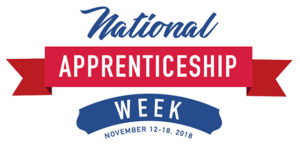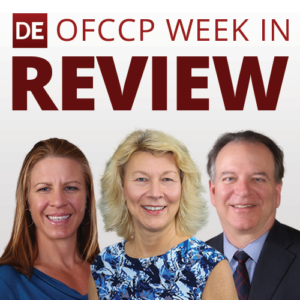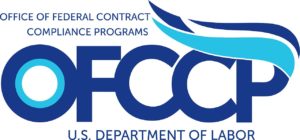Friday, November 9, 2018: EEOC Reports Another Year of Strong Management Results

- “The EEOC’s outreach programs reached 398,650 individuals, providing them with information about employment discrimination and their rights and responsibilities in the workplace.”
- “Over 67,860 individuals benefited from the EEOC’s resolutions of charges, cases, and federal employees’ complaints and appeals in Fiscal Year 2018.”
- “To address persistent workplace harassment, the EEOC conducted more than 300 Respectful Workplaces trainings that reached over 9,800 employees and supervisors in the private, public and federal sectors.”
- “The EEOC secured approximately $505 million and other relief for over 67,860 victims of discrimination in the workplace” as follows (although the below numbers from the EEOC add in fact to over $506M):
- $354 million through mediation, conciliation, and settlements;
- $53.5 million through litigation; and
- $98.6 million for federal employees and applicants in hearings and appeals.
NOTE: It is always disheartening to read each year that the federal government (with about 2 million civilian employees, including the US Postal Service) pays alleged victims of discrimination about 20% of the discrimination payments paid out each year compared to the over 140 million employees in the private sector which get the other 80% of the payments. Were the federal government’s discrimination payments proportional to the private sector, the federal government payments would be under 3% of the total, instead of 20%.
- “The EEOC’s legal staff resolved 141 merit lawsuits, filed 199 more in FY18.”
- “The EEOC reached more than 398,650 individuals nationwide in 3,926 outreach events with information about employment discrimination and their rights and responsibilities in the workplace.”
- “The EEOC also made significant progress in reducing its backlogs, reporting a 19.5 percent reduction in its private sector charge backlog, a 19.4 percent reduction in the backlog of federal employee appeals, an 8.5 percent reduction in the backlog of federal employee hearings, and a 7.6 percent reduction in the backlog of Freedom of Information Act (FOIA) requests.”
- Specifically, the EEOC “resolved 90,558 private and public sector charges, reducing its backlog by 19.5 percent to 49,607 charges — the lowest inventory in more than ten years.
It is also significant to note that the EEOC’s launch this year of its online Public Portal allowing on-line filing of Charges and answering many Charge intake questions resulted, the EEOC also reported Friday, in a 30% INCREASE in inquiries to the EEOC and over 40,000 EEOC Charge intake interviews with potential claimants. This is significant since Charges to the EEOC usually subside during strong economic times like those the country is currently experiencing. The Online Charge filing opportunity is clearly making it easier and more inviting to Charging parties to file Charges rather than to go down physically to EEOC Offices, as in the past, to stand in line to fill out paper Charge forms.
You will see all the figures reported above again later this week in public media (and in next week’s WIR) when the EEOC publishes this coming Thursday its “Fiscal Year 2018 Performance and Accountability Report.” This report will be The Commission’s annual in-depth report of the Commission’s achievements and challenges in just completed FY 2018.
Sunday, November 11, 2018: Happy Veterans Day!
2018 marks the Centennial Commemoration of the end of World War I on November 11, 1918. The theme for the 2018 Veterans Day Poster is: “The War to End All Wars” and features a poppy and barbed wire.
Veterans Day is a well-known American holiday, but there are also a few misconceptions about it. Here are a few important facts you should know.
Fact 1: Veterans Day does NOT have an apostrophe.
Incorrect: “Veteran’s Day” or “Veterans’ Day”
The holiday is not a day that “belongs” to one veteran or multiple veterans, which is what an apostrophe implies. It’s a day for honoring all veterans — so no apostrophe needed.
Fact 2: Veterans Day is NOT the same as Memorial Day.
Memorial Day is a time to remember those who gave their lives for our country, particularly in battle or from wounds they suffered in battle.
Veterans Day honors all of those who have served the country in war or peace — dead or alive — although it’s largely intended to thank living veterans for their sacrifices.
Fact 3: It was originally called Armistice Day, commemorating the end of World War I.
The Treaty of Versailles, signed on June 28, 1919, officially ended World War I. However, the fighting ended about seven months before that when the Allies and Germany put into effect an armistice on the eleventh hour of the eleventh day of the eleventh month.
For that reason, Nov. 11, 1918, was largely considered the end of “the war to end all wars” and dubbed Armistice Day. In 1926, Congress officially recognized it as the end of the war, and in 1938, it became an official holiday, primarily a day set aside to honor veterans of World War I.
But then World War II and the Korean War happened, so on June 1, 1954, at the urging of veterans service organizations, Congress amended the commemoration yet again by changing the word “armistice” to “veterans” so the day would honor American veterans of all wars.
Congress signed the Uniform Holiday Bill in 1968 to ensure that a few federal holidays — Veterans Day included — are celebrated on a Monday. Officials hoped it would spur travel and other family activities over a long weekend, which would stimulate the economy.
Fact 4: For some inexplicable reason, the bill set Veterans Day commemorations for the fourth Monday of every October.
Oct. 25, 1971 was the first Veterans Day under this new bill. No one knows why it took three years to implement, but not surprisingly, there was a lot of confusion about the change, and many states were unhappy, choosing to continue to recognize the day as they previously had — in November. Within a few years, it became apparent that most U.S. citizens wanted to celebrate Veterans Day on Nov. 11th, since it was a matter of historic and patriotic significance. So on Sept. 20, 1975, President Gerald Ford signed another law, Public Law 94-97, which returned the annual observance to its original date starting in 1978.
Fact 5: Other countries celebrate as well.
World War I was a multinational effort, so it makes sense that our allies also wanted to celebrate their Veterans on Nov. 11th. Although the name of the day and the activities vary, the theme of honoring Veterans is universal.
Canada and Australia both call Nov. 11th “Remembrance Day.” Canada’s observance is similar to our own, except many of its citizens wear red poppy flowers to honor their war dead. In Australia, the day is more akin to our Memorial Day.
Great Britain calls it “Remembrance Day,” too, but observes it on the Sunday closest to Nov. 11th with parades, services and two minutes of silence in London to honor those who lost their lives in war.
Source: U.S. Department of Defense.
To all Veterans and their families, we sincerely thank you for your service and the sacrifices you make to keep us free and safe.
Here at DirectEmployers, every day is Veterans Day, thank you!
Monday, November 12, 2018: National Apprenticeship Week

National Apprenticeship Week: November 12-18, 2018
Remember to post your apprentices jobs at Apprenticehip.gov. DirectEmployers Members, we do this for you! Confirm with your Membership Representative that you are using the correct “trigger” words.
 Tuesday, November 12, 2018: Comments on FAAP Directive Close
Tuesday, November 12, 2018: Comments on FAAP Directive Close
Today is the last day to get your comments in on the proposed changes to the Functional Affirmative Action Plan Program. Flashback here for our original breakdown. Submitted comments are straggling at a mere few.
A VERY notable suggested change is removing the requirement of an automatic compliance review – THIS IS HUGE! Get your comments in here!
Reminder: Saturday, November 17 is Take a Hike Day

THIS COLUMN IS MEANT TO ASSIST IN A GENERAL UNDERSTANDING OF THE CURRENT LAW AND PRACTICE RELATING TO OFCCP. IT IS NOT TO BE REGARDED AS LEGAL ADVICE. COMPANIES OR INDIVIDUALS WITH PARTICULAR QUESTIONS SHOULD SEEK ADVICE OF COUNSEL.

John C. Fox, Esq. is President and Partner at Fox, Wang & Morgan P.C. where he represents companies and tries cases in state and federal courts throughout the United States. Mr. Fox has extensive trial experience, having spent more than 300 days in trial. Mr. Fox was also lead trial counsel in the first of the six wage-hour class actions known to have been tried in California and was lead trial counsel in what are believed to have been the two largest disability law suits in the United States. He is an across-the-board employment lawyer representing management nationwide.
SUBSCRIBE.
Compliance Alerts
Compliance Tips
Week In Review (WIR)
Subscribe to receive alerts, news and updates on all things related to OFCCP compliance as it applies to federal contractors.
OFCCP Compliance Text Alerts
Get OFCCP compliance alerts on your cell phone. Text the word compliance to 55678 and confirm your subscription. Provider message and data rates may apply.



 Tuesday, November 12, 2018: Comments on FAAP Directive Close
Tuesday, November 12, 2018: Comments on FAAP Directive Close